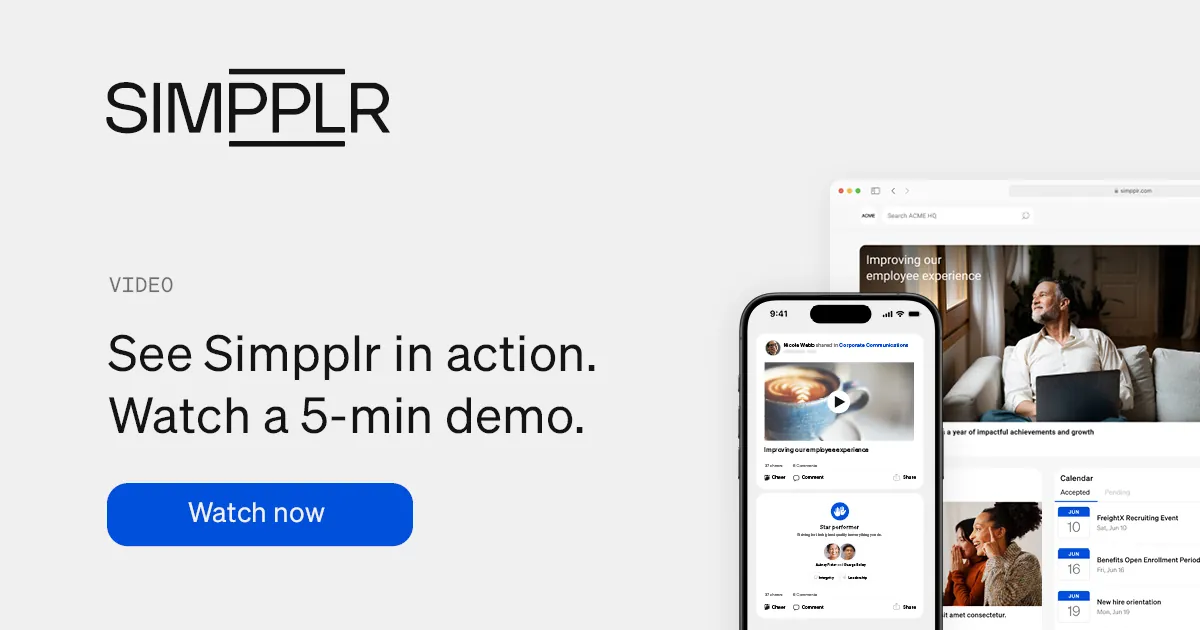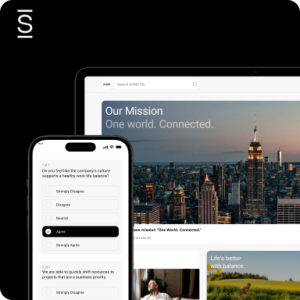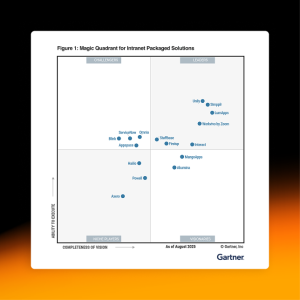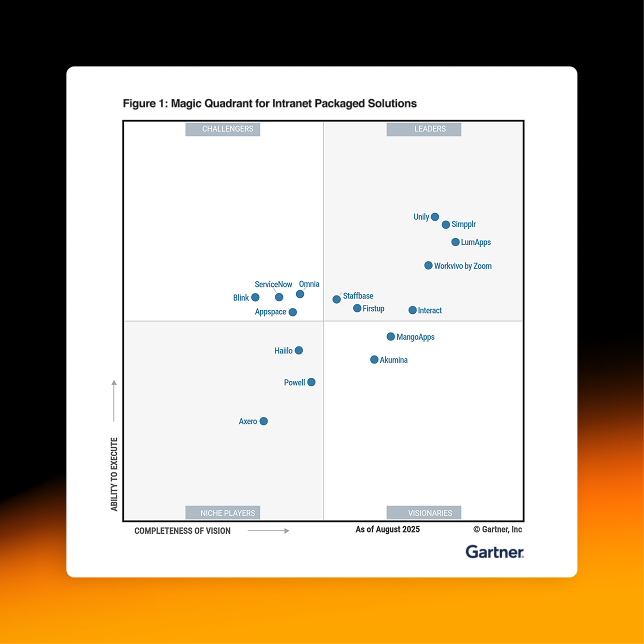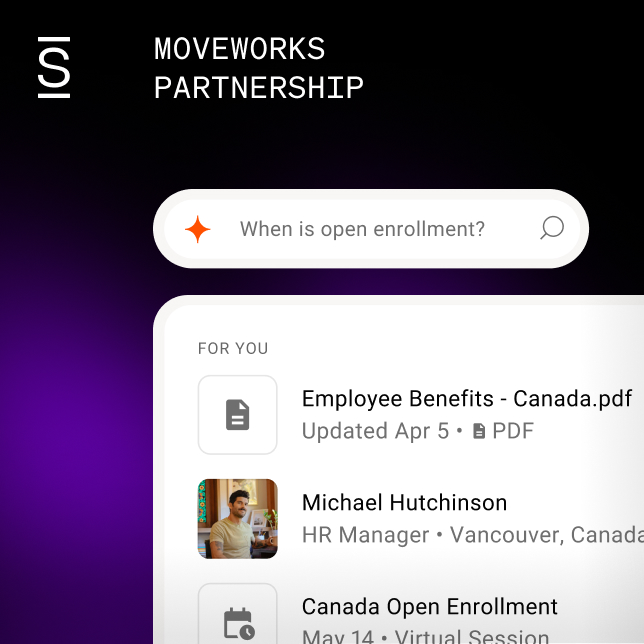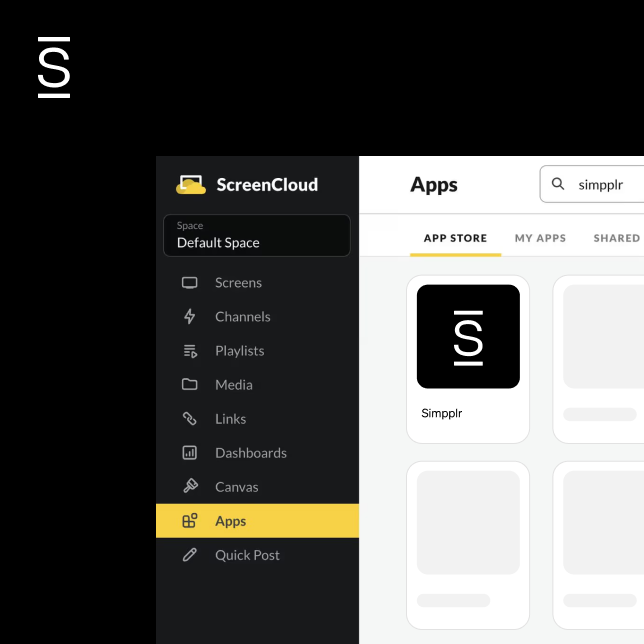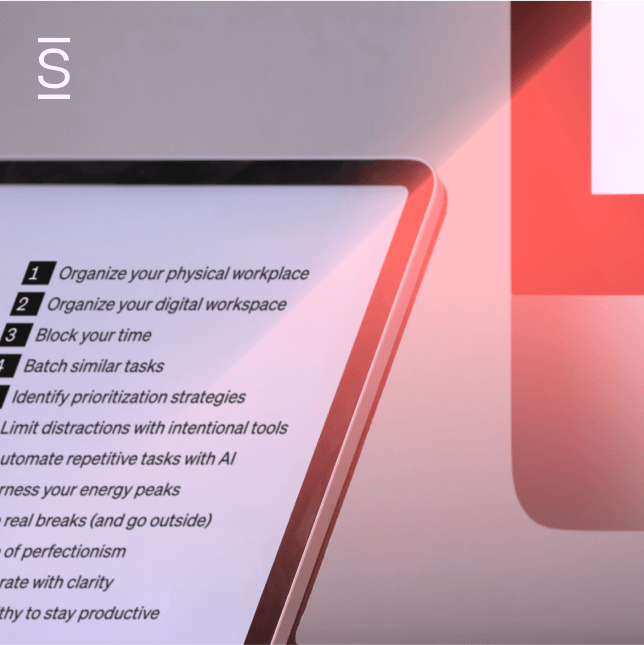Successful businesses are often more than the sum of their parts. Now, what if those parts, each individual cog, worked seamlessly together? Imagine ideas and knowledge flowing effortlessly from one employee to another. That’s what collaboration in the workplace can do.
- 1 What is collaboration in the workplace?
- 2 Why is team collaboration important?
- 3 Examples of workplace collaboration
- 4 Companies prioritizing collaboration
- 5 Benefits of teamwork and collaboration in the workplace
- 6 How to improve employee collaboration
- 7 types of workplace collaboration tools
- 8 The blueprint for a collaborative culture
What is collaboration in the workplace?
The meaning of collaboration is when multiple individuals work together to accomplish a shared goal. That definition, while accurate, doesn’t truly reveal how complex and challenging the art of collaborating is — especially within the workplace.
Collaboration in the workplace is not merely delegating tasks or dictating work to other colleagues, it’s a more cohesive and fluid strategy that requires engagement, communication, discussion, the sharing of ideas, feedback and more.
When done well, workplace collaboration unites and motivates team members towards a productive and shared vision for the company.
Collaboration in the workplace occurs daily and across many departments and projects. From working with freelance writers to creating blog articles to department heads setting quarterly budgets — company collaboration is everywhere.
In 2020, the pandemic forced an estimated 70% of full-time U.S. employees to work remotely. This seemingly overnight shift to a remote office brought workplace collaboration to the forefront of business leaders’ minds. How can we ensure employees are happy, motivated, productive, and connected while working from home? Answering these questions required prioritizing collaboration and the tools that make workplace collaboration possible.
Thankfully, many organizations began to not just understand what collaboration in the workplace was, but they used that perspective to foster healthy workplace collaboration.
They embraced and prioritized collaborating, because these businesses understood that collaboration leads to more satisfied employees, better creativity and higher productivity across all levels of an organization.
Related: Improve employee engagement and collaboration during remote work
Why is team collaboration important?
“Great things in business are never done by one person; they’re done by a team of people.” ~ Steve Jobs
Business success is often rooted in effective collaboration. This statement has never been more true than in today’s global marketplace. If you strive to run one of the most successful businesses in your industry, market, or even town—you will need help.
A group of individuals motivated and working towards a shared goal can collectively accomplish more than a single person. Working effectively in teams requires sharing knowledge and communicating well, which improves productivity, leads to better decision-making, and promotes healthy employee relationships.

Examples of workplace collaboration
One of the best ways to grasp the concept of workplace collaboration is to see examples of how collaboration exists within different organizations.
HR professional addresses remote work challenges
Let’s say you’re an HR professional at a company that has adopted a remote-work environment post-pandemic. You are interested in learning more about the pulse of your workplace and decide to work with Internal Communications on an employee experience survey to measure employee engagement, satisfaction and more.
The results of the survey indicate that your remote workers want more support for internal communications, team-building and mental health. Collaborating further with the Internal Communications department, you implement strategies and tools to address these concerns — leading to a more engaged and productive workplace.
IT collaborates with department heads to reduce support tickets
Now, let’s say you work in IT for a growing company. As more employees get onboarded across the departments, you notice support tickets increasing, too. This upscale is starting to create bottlenecks for your team and the company.
You decide to meet with the department heads to discuss the most common technical problems facing each of their teams. With this information, you work on creating tutorials, training videos, FAQs and other resources to mitigate the need for individual support.
As a result, support tickets decrease, employees productivity and satisfaction improve, and the company’s technical infrastructure becomes more scalable.
HR improves onboarding and reduces turnover
This time, you work in a restaurant chain’s human resources department. Your role is to find, hire and train front-of-house staff. For many months, you’ve struggled with high turnover and disengaged employees who often complain of feeling overwhelmed and disconnected from the rest of the restaurant.
You decide to introduce a mandatory shadowing period with the back-of-house team as part of the onboarding process. What you discover is that this new onboarding step helps new hires acclimate better to the restaurant and also fosters a more collaborative environment between back- and front-of-house.
By adding the shadowing as part of the onboarding, you help new hires and the more seasoned back-of-house employees establish rapport, which leads to a more collaborative environment and more satisfied employees — reducing turnover.
Companies prioritizing collaboration
Another way to gain perspective on workplace collaboration is by seeing how other companies prioritize collaborative processes. Below are a few examples of brands doing workplace collaboration well.
Google’s ‘20% time’ rule, creativity and collaboration
Google is considered one of the more innovative companies in the world, and most businesses would love to mimic Google’s success. In 2004, Larry Page and Sergey Brin wrote about a company policy they implemented known as “20-percent time.”
The idea is that employees and teams should spend 20% of their time working on other projects outside their day-to-day that they believe will add value to the company as a whole. It offers a productive and positive outlet for employees to work on projects they are more passionate about.
This approach gives employees autonomy and empowers creative and innovative thinking.
It also requires employee collaboration because employees are openly sharing new ideas, gathering employee feedback, and working with members across various departments.
Google’s 20% time policy was instrumental in the development of some of its most popular and successful projects — Gmail, Google Maps, Google Ads and Google News.
Amazon’s ‘Two-Pizza Team’ rule and collaboration
Amazon is another brand that businesses can learn from, and within the context of workplace collaboration, they follow the Two-Pizza Team principle set forth by Jeff Bezos. This concept basically says that two pizzas should be able to feed any team working on a project.
The idea is to keep teams small (five to seven people), because smaller teams are more flexible and agile — which encourages better communication, faster results and easier collaboration.
The communication complexity calculation, which measures the amount of conversations or communication channels that exist in a group, echoes this sentiment.
Consider a team of three employees. Each person can communicate with two others individually or as an entire group — three channels. However, if your group grows to four employees the number of unique communication paths jumps to six. At 10 members, you have 45 different communication paths.
Amazon has grown into arguably the strongest brand in the world, in part, because of its ability to collaborate efficiently — and the Two-Pizza Team is a foundational principle in Amazon’s culture.
Pixar’s ‘Braintrust’ meetings and collaboration
Pixar is one of the most creative and forward-thinking companies around, and it prioritizes collaboration with what they call “Braintrust” meetings.
A Pixar Braintrust meeting brings key personnel together to talk candidly about current and upcoming projects. From directors and producers to key members of the creative team, these meetings are meant to provide a forum for important parties to discuss concerns, share ideas, and help make better strategic decisions.
Pixar’s Braintrust meetings were considered critical in the development of some of its most iconic animated films, like Toy Story and Finding Nemo.

Benefits of teamwork and collaboration in the workplace
Teamwork and collaboration aren’t just buzzwords; they should be core principles of your company culture. By fostering a collaborative environment, businesses can tap into a range of benefits — tangible and intangible.
Here are five of the main benefits of teamwork and collaboration in the workplace.
1. Collaboration increases innovation and creativity
Everyone in a team has their own perspective, background, and experiences — which brings diversity to every situation. For example, someone from HR might approach a problem differently than someone from sales.
By fostering a culture that encourages collaboration, you can create opportunities to approach projects from unique vantage points.
This environment leads to brainstorming and collaborative discussions, which help ignite innovation and creativity.
2. Teamwork leads to efficient solutions
The proverb “two heads are better than one” still holds true today. Collaborative teams bring a wealth of knowledge, skills and resources that an individual just can’t replicate alone. Teamwork culture offers opportunities to cover blind spots and paves the way for more efficient problem solving.
One Stanford study found that employees in a collaborative environment saw a 50% increase in productivity compared to similar employees working individually. Not only were these employees more productive, but they were more intrinsically motivated and engaged with their tasks.
3. Collaboration enhances employee morale and satisfaction
Innovation and productivity are tangible benefits to collaboration and teamwork in the workplace, but an intangible benefit is improved employee satisfaction.
Collaborative environments typically lead to trust and mutual respect, which helps employees feel valued and heard.
A study from Zippia found that employees were 17% more satisfied with their job when they were engaged in collaborative work. Happy employees improve the entire company culture — creating more accountability and decreasing turnover.
Related: How to improve employee satisfaction
4. Teamwork helps develop your employees
Transferring knowledge and skills is another benefit to collaborative settings. Because each member brings something different to the table, the likelihood of employees developing new skills increases when working as a group.
Collaboration and teamwork also boosts employees’ soft skills — like communication, empathy, problem-solving and listening. In the modern workplace, developing soft skills can have exponential value and should not be overlooked.
5. Collaboration mitigates risks
When you think about collaboration and teamwork in the workplace, risk management might not be the first thing that comes to mind. But, when you have employees collaborating, sharing feedback and brainstorming, they are also vetting each other’s ideas. This process inherently helps eliminate individual biases.
How to improve employee collaboration
Many managers understand the importance of teamwork and collaboration in the workplace, but they don’t know how to develop the right environment or introduce effective teamwork strategies. Below are a few tips to help you improve workplace collaboration.
- Practice active listening: Effective communication is the backbone of a collaborative environment — and good listening skills are one of the best ways for effective communication in the workplace. Employees are more likely to share their thoughts if they feel heard, so prioritize active listening.
- Set clear goals: The definition of collaboration is the act of team members working effectively towards a shared goal. To do that, there must be a clear goal. Setting expectations and outlining ground rules can help employees stay focused and move toward that finish line.
- Lead by example: Company culture starts from the top, so managers and leaders within the organization must set examples of how to collaborate effectively. This means practicing respect and maintaining an open mind to outside views and feedback. Leaders who are transparent, admit mistakes, and recognize employees will inspire others within the organization to do the same.
- Stay flexible: Flexibility is an important factor in fostering collaboration in the workplace. Everyone in the team has unique perspectives and responds differently to environmental factors. Allow teams the autonomy to find what works best for them. That could involve out-of-office meetings, new technologies or other factors you didn’t anticipate.
- Celebrate collaborative wins: Recognizing and rewarding collaboration in the workplace will encourage it more. Celebrating collaboration sets a positive precedence and also boosts employee morale.
- Leverage collaboration tools: Businesses have every incentive to use the available digital tools to foster collaboration in the workplace. There are countless solutions to simplify corporate communication, increase employee engagement, streamline project management, and improve collaboration.
Related: The power of employee listening — benefits and strategies
4 types of workplace collaboration tools
There is no shortage of workplace collaboration tools at your fingertips, but which ones are worth your time? Below are four different types of workplace collaboration tools with an example of each.
Team messaging platforms: Slack
Messaging platforms, like Slack, are simple but effective communication tools that help facilitate collaboration in a low-stress environment. Slack is one of the most popular messaging platforms available and boasts many features and integrations that cater to collaborative environments.
For example, Slack allows users to create channels with multiple members that are organized by departments, projects or other topics that are most relevant to those teams. This helps keep conversations focused and accessible.
Project management tools: Trello
Project management tools, like Trello, are designed with collaboration in mind. These tools are meant to streamline workflows and shepherd a project from concept to completion. Trello is one of the more widely-known project management tools thanks, in part, to its user-friendly interface and robust collaborative features.
For example, Trello allows teams to customize their projects with individual cards. These cards can have multiple users within them and include features like checklists, due dates and comments — providing a centralized place for real-time updates and feedback. Trello and project management tools like it make collaboration seamless.
Document collaboration: Google Drive
Cloud-based collaboration tools, like Google Drive, provide the actual resources teams need to collaborate — especially remote teams. These solutions offer practical business resources in a collaborative setting that allows multiple users to access and modify the same file in real-time anywhere in the world. Google Drive is arguably the most popular solution with a number of applications like Google Docs, Google Sheets, Google Slides and file sharing through Google Drive.
For example, Google Sheets can provide a shared database for users to collaborate on a project. One person could cleanse the data while another person turns that data into charts and graphs for a third team member to analyze and report on.
Google Drive and other similar products provide many of the collaboration tools needed for teams to work together more fluidly, no matter where they are.
Intranet platform: Simpplr
An intranet, like Simpplr, acts as a source of truth within the workplace and provides the resources needed to help facilitate collaboration and communication. From brainstorming and real-time discussions to knowledge sharing and employee recognition, an intranet offers businesses a wide range of use cases for building a collaborative environment.
Simpplr is a collaboration powerhouse thanks to its cutting-edge technology and seamless integration with other business suites.
For example, Simpplr helps enhance collaboration with its social networkng features. Employees are empowered to share updates and encouraged to ask questions and interact with other employees in a centralized and safe space. This feature promotes a collaborative culture and helps bridge the gaps and silos that form within an organization.
Related: 13 proven collaboration tools your team will love
The blueprint for a collaborative culture
The most successful businesses are ones that understand the power of their most important resource — employees. If you’re looking to harness the power of collaboration and encourage your team to share their ideas, experiences, skills and perspectives while working on projects, then you need to prioritize developing a collaborative culture.
Ready to start benefiting from better collaboration in your workplace? Check out Simpplr, the most comprehensive intranet platform that delivers more — features, benefits, value, insights.
This article includes content originally contributed by Jamie Yan.
